By Michael Hermann | Sep 5, 2013
In our last post, we discussed the Initial Design Engagement (IDE), the first phase of electronic product development at Nuvation Engineering. During this phase of a client project, we gather requirements, create design descriptions, prepare the Acceptance Test Plan (ATP) and the Project Work Plan (PWP). Here are some common questions clients ask us about the process.
Beginning Nuvation Projects: Top 5 FAQs
1) Can’t we just dive in and start prototyping things?
The answer to that is yes, to a certain extent. Engineers love to dive in and start making things – writing code, drawing schematics, etc. After all, that's is the fun part! But this can quickly become inefficient without a plan. An IDE can involve writing some code to test a library, measuring an algorithm, or making a quick breadboard in the lab to test out a certain unusual circuit, but everything needs to feed into the design descriptions. That’s the pathway to efficient work.
2) Why are you writing so much documentation?
We’re not writing any! Although that’s somewhat a matter of semantics; consider “documentation” to be writing what has happened. In the IDE process we do the opposite: determine what will be done moving forward, before doing it.
3) Can you possibly write a design description that figures it all out now?
Consider working without a plan to be like flying a trapeze without a net; something a master acrobat would only do after practicing the same exact routing many, many times. We write design descriptions to take us through the analysis, critical thinking, and design decision-making ahead of doing much implementation. That way when we get into implementation there’s a plan, and while things happen and discoveries are made, there is still a plan in place. Implementation, when properly done, will introduce variances to the design that need to get put back into the design descriptions – we call this “back-doc”.
4) Why doesn’t the ATP include all product qualification tests?
While the ATP can include qualification tests, that’s not usually its purpose. The ATP and PWP define the project scope, which you can estimate against with some confidence. Product qualification tests include things like environmental tests, system tests, manufacturing impacts, compliance tests, and more.
EDIT: They are much broader in scope and have a lot to do with introducing the project’s outputs to other elements such as boards, software, enclosures, and sensors.
The project which the ATP and PWP address is usually defined as less than the whole board scope in order to facilitate a reasonable estimate confidence level, and set a well-defined initial scope. That next layer out with the broader scope will certainly be tackled, but figuring it out upfront delays progress on the core design.
5) Is this costing me more or taking longer?
Not in the long run. Nuvation Engineering focuses on doing things right the first time, which means designing before implementing. Industry and academic analyses continue to reinforce the fact that when you avoid a problem in design it has substantial (multiples, as much as 10x or even more) savings against a problem found later in testing. The most horrible of all problems–a fundamental architecture problem–are virtually eliminated in our process.



